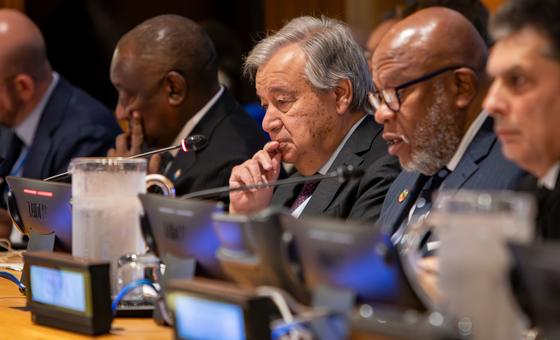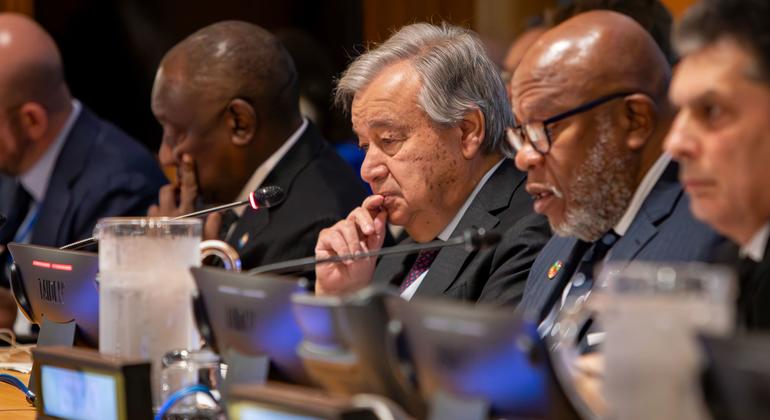
The big objective of the major UN General Assembly meeting is to unlock innovative and practical solutions to close the widening divisions between rich and poor.
The UN Department of Economic and Social Affairs which drives the UN’s effort on SDG financing, notes that although fiscal challenges are mounting, “there is a window of opportunity if we act now.”
Financial divide
Most developing countries suffer from severe debt problems. And one in three countries around the world is now at high risk of suffering a fiscal crisis, according to the UN.
These countries cannot fund progress on the SDGs if they are facing exorbitant borrowing costs and paying more on debt servicing than on health or education.
“Developing countries face borrowing costs up to eight times higher than developed countries – a debt trap”, warned UN Secretary-General António Guterres, “and one in three countries around the world is now at high risk of a fiscal crisis.
“Over 40 per cent of people living in extreme poverty are in countries with severe debt challenges”.
Held every four years since 2015, This year’s High-level Dialogue takes place at a critical moment, when only around 15 per cent of SDG targets are on track.
Member States noted that while progress has been made across all action areas of the Addis Ababa Action Agenda – the roadmap for financing the SDGs – many of its finance commitments remain unmet.
They added that challenging economic prospects amid the lingering effects of the COVID-19 pandemic, conflicts and intensifying climate change have put financing for the SDGs under increased pressure.
Innovative approaches
According to Mr. Guterres aggressively scaling up SDG financing will require innovative approaches, bold policy decisions, and new sources of funding.
Member States welcome the UN Secretary-General’s proposal for an SDG Stimulus of at least $500 billion US dollars per year to significantly increase affordable, long-term financing for development.
They also support his call for deeper and longer-term reforms to the international financial architecture, which currently fails to serve as a safety net for all countries and exacerbates inequalities.
Solutions must be systemic
“It is clear that the systemic problems of financing for sustainable development require a systemic solution: reforms of the global financial architecture,” said the UN chief.
He is also calling for a new Bretton Woods moment, when countries can come together to agree on new global financial architecture that reflects today’s economic realities and power relations.
“Together, we must turn this moment of crisis into a moment of opportunity, find joint financing solutions to rebuild global solidarity, and create new momentum for sustainable development and climate action,” Mr. Guterres said.



